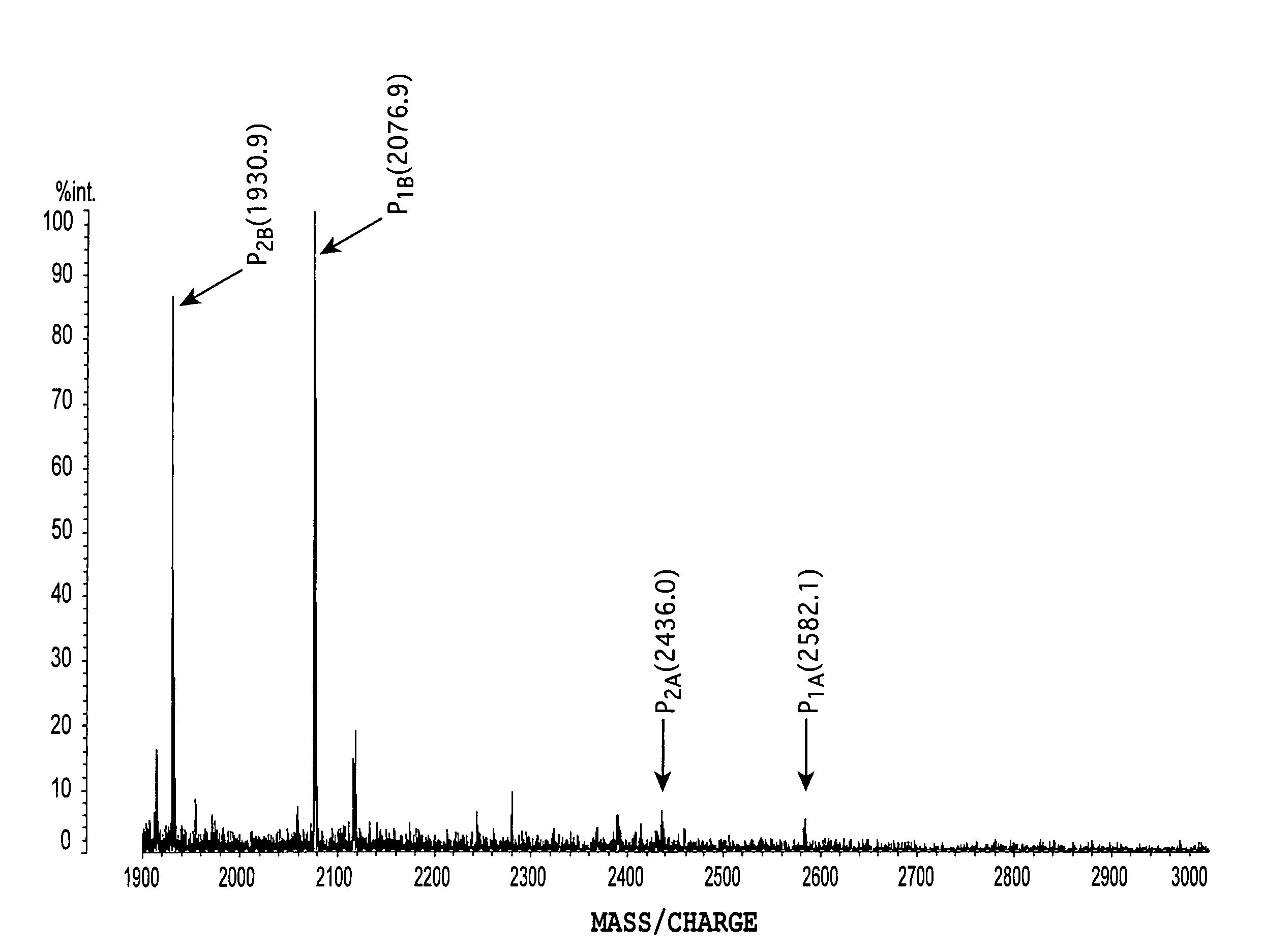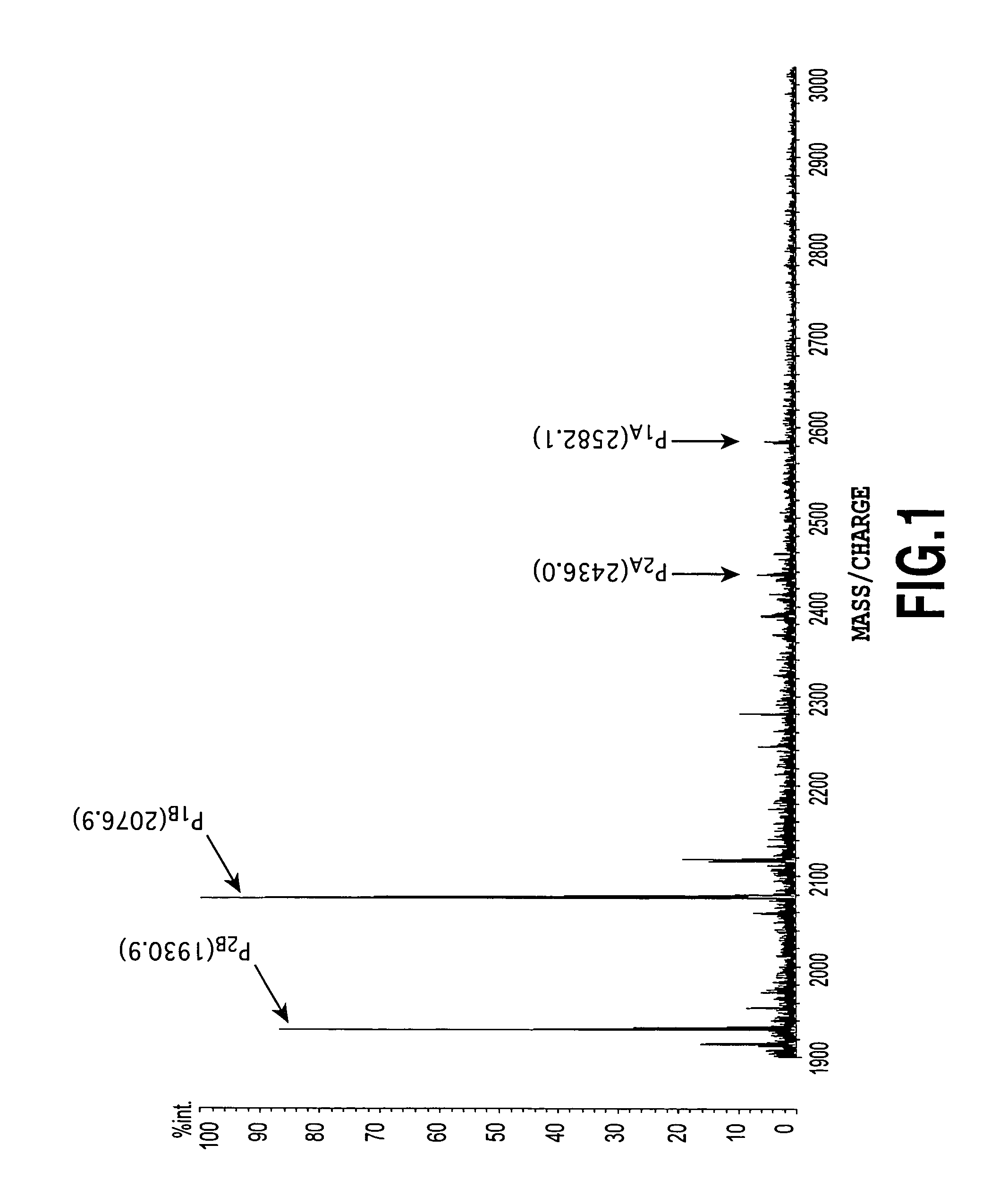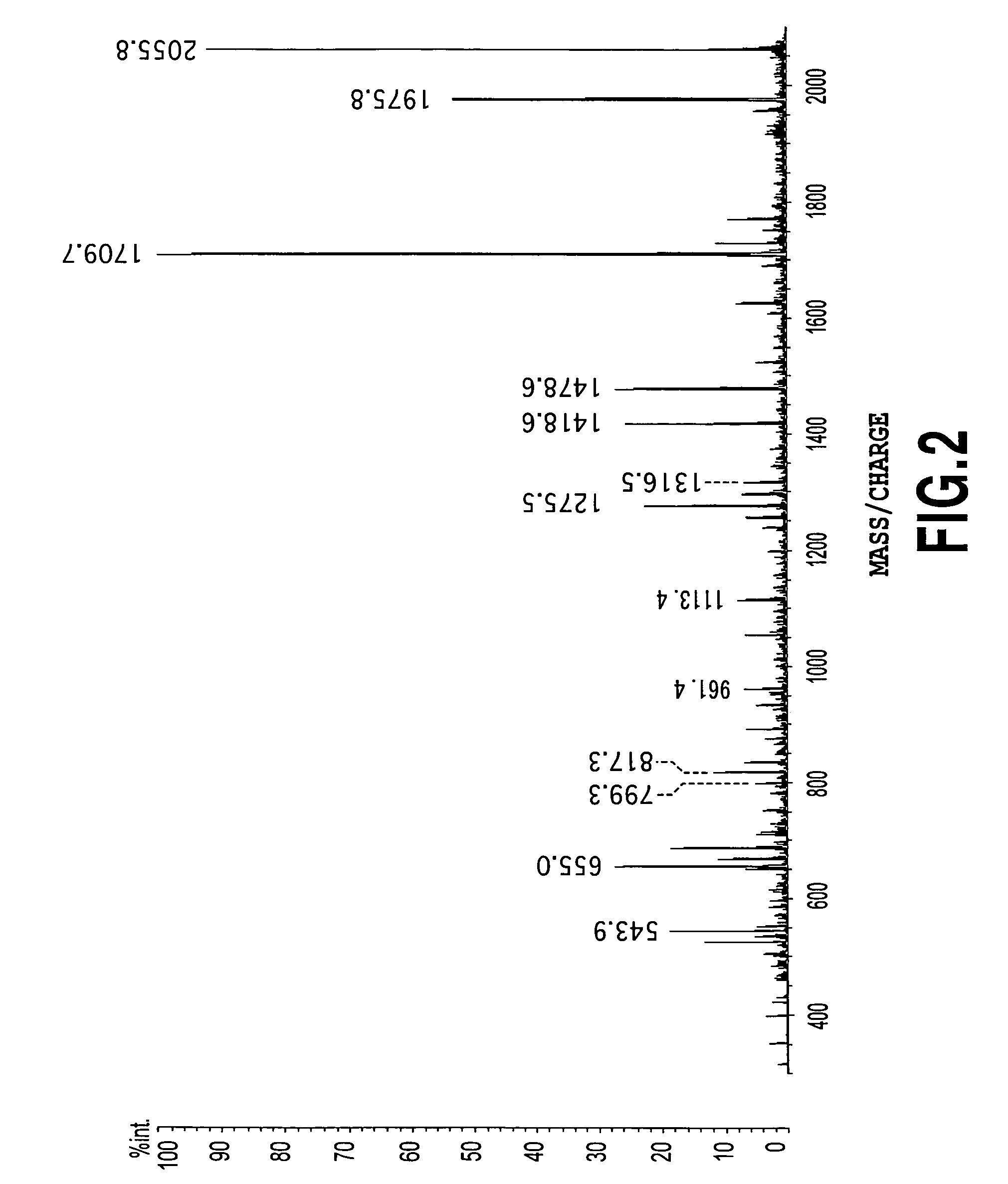Method for discriminating between prostatic cancer and benign prostatic hyperplasia
a prostate cancer and benign prostatic hyperplasia technology, applied in the field of new prostate cancer, can solve the problems of not describing significant overlap between the two lesions, and not determining the specific structure of psa glycan in subjects suffering from pc or bph, etc., and achieve the effect of accurate discrimination between bph
- Summary
- Abstract
- Description
- Claims
- Application Information
AI Technical Summary
Benefits of technology
Problems solved by technology
Method used
Image
Examples
example 1
(a) Step 1 Isolation of PSA
[0042]First, immunoglobulin in serum was removed. A disposable plastic column (Pierce Biotechnology, Inc.) was filled with 4 mL of Protein A agarose (Pierce Biotechnology, Inc.), and equilibrated by using phosphate buffered saline (PBS). A mixture of serum of a subject who has been diagnosed with BPH (T-13) and PBS was added to the Protein A agarose-filled column, and the column was rinsed with two column volume (CV) of PBS. A fraction containing PSA which was not bound to the carrier was collected, and Na2SO4 was added to a final concentration of 1 M.
[0043]Next, albumin, which is a major protein in serum, was removed. A disposable plastic column was filled with 1 mL of Fractogel (trademark) EMD TA(S) (Merck KGaA), and equilibrated with 20 mM phosphate buffer (pH 7.4, containing Na2SO4 (1 M)). The above described fraction containing PSA was added to the Fractogel-filled column, and the column was rinsed with 7 CV of the same buffer by using a liquid feed p...
examples 2 through 16
[0064]The procedure of Example 1 was repeated by using sera of 3 subjects, who have been diagnosed with BPH, anonymised, and added with identification codes (Examples 2 through 4), as well as sera of 12 subjects, who have been diagnosed with PC by biopsy, anonymised, and added with identification codes (Examples 5 through 16). Moreover, the study underwent ethics review at a medical institution and was approved. The subjects were informed, and the consent was given from the subjects.
[0065]The following Table 1 shows PSA concentration in serum and the signal intensity ratio R of fucose-unbound glycan (m / z=2436) / fucose-bound glycan (m / z=2582) in each subject. Moreover, the signal intensity ratio of fucose-unbound glycan (m / z=1931) / fucose-bound glycan (m / z=2077), wherein the pyrene-labeled portion and one N-acetylneuraminic acid residue were eliminated, showed a similar R value.
[0066]
TABLE 1Evaluation results of Examples 1 through 16PSAconcentrationIdentificationDiseasein serumcodename...
example 17
[0073]The present example is an example which shows a glycopeptides can be used instead of glycans in the above described examples.
[0074]By using a reference standard PSA (Nippon Chemi-Con Corp.), electrophoresis at the fifth stage described in step 1 of Example 1 and the steps of reduction with DTT, alkylation with iodoacetamide, rinsing and drying described in step 2 were performed to obtain a dried gel. In this case, reduction with DTT and alkylation with iodoacetamide described in step 2 may not be performed.
[0075]Next, to the dried gel, an aqueous solution of 25 mM ammonium bicarbonate of 1 to 100 units of thermolysin (Calbiochem) (pH 8.0) was added, and the mixture was left to stand in an ice bath for 45 minutes to swell the gel. The swollen gel was gently agitated for 18 hours at 56° C. To the gel, an extraction solution (an aqueous solution containing 70 to 80% acetonitrile and 0.1% trifluoroacetic acid) was added, shaken for 20 minutes, and the solution was collected.
[0076]...
PUM
| Property | Measurement | Unit |
|---|---|---|
| concentration | aaaaa | aaaaa |
| concentration | aaaaa | aaaaa |
| concentration | aaaaa | aaaaa |
Abstract
Description
Claims
Application Information
 Login to View More
Login to View More - R&D
- Intellectual Property
- Life Sciences
- Materials
- Tech Scout
- Unparalleled Data Quality
- Higher Quality Content
- 60% Fewer Hallucinations
Browse by: Latest US Patents, China's latest patents, Technical Efficacy Thesaurus, Application Domain, Technology Topic, Popular Technical Reports.
© 2025 PatSnap. All rights reserved.Legal|Privacy policy|Modern Slavery Act Transparency Statement|Sitemap|About US| Contact US: help@patsnap.com



